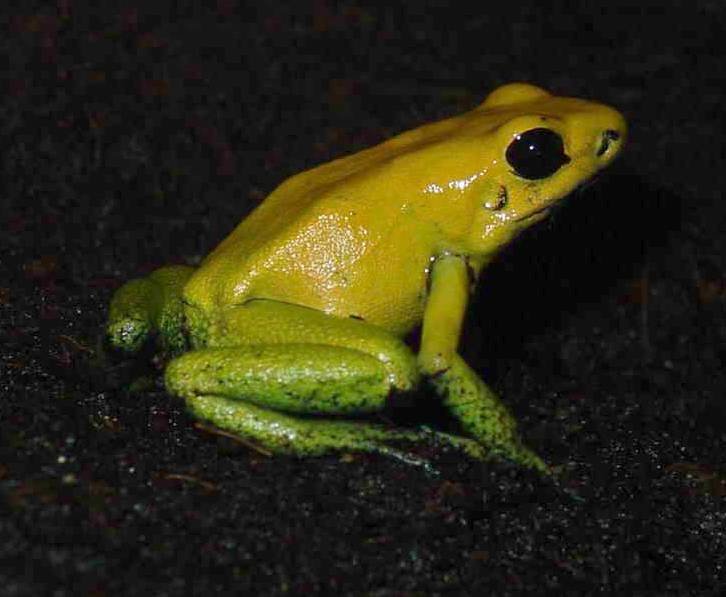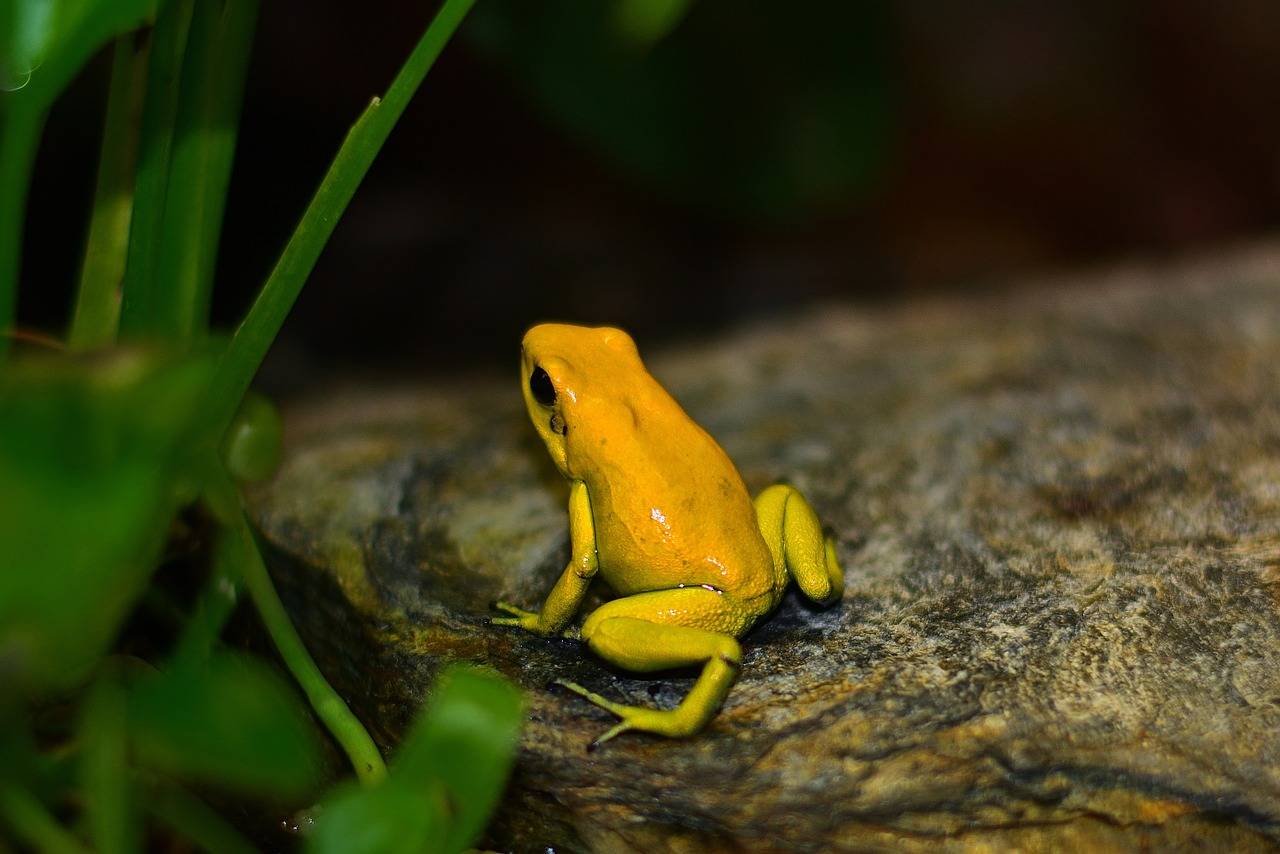The Black-legged Poison Frog, scientifically known as Phyllobates bicolor, is among the lesser-known yet highly toxic species of poison dart frogs. Native to Colombia, this intriguing amphibian is notable for its striking appearance and dangerous toxins. Let’s explore the unique characteristics and ecological role of the Black-legged Poison Frog.
Characteristics and Appearance
The Black-legged Poison Frog is renowned for its vibrant coloration. The body is typically bright yellow or orange, contrasting with its dark-colored limbs, lending the frog its common name. This vivid coloring serves as a warning to potential predators about its toxicity, a defensive technique known as aposematism. Adult frogs usually measure about 1 to 1.5 inches in length.

This is the Black-Legged Poison Dart Frog (Phyllobates bicolor).
Habitat and Distribution
These frogs inhabit the humid, tropical lowland rainforests of western Colombia. They thrive in dense, moist forests with abundant leaf litter and proximity to streams or small pools, ideal for maintaining humidity and providing breeding sites.
Toxicity and Diet
The Black-legged Poison Frog is among the most toxic within the Dendrobatidae family, secreting potent batrachotoxins. They acquire these toxins from their diet, which includes alkaloid-rich insects such as certain ants and beetles. These toxins effectively deter predators in their natural habitat.
Reproduction and Lifecycle
Black-legged Poison Frogs exhibit distinctive reproductive behaviors. During the breeding season, males vocalize to attract females, guiding them to suitable sites for laying eggs. Females deposit eggs in moist locations, and once the eggs hatch, the males transport the tadpoles to water bodies for further development.
Conservation Status
While the Black-legged Poison Frog maintains stable populations, it faces threats from habitat destruction and environmental changes. Conservation initiatives focused on protecting their rainforest habitats are crucial for their continued survival.
FAQs About Black-legged Poison Frogs
Why are Black-legged Poison Frogs toxic?
These frogs produce batrachotoxins, which they gain from their natural diet of alkaloid-rich insects that serve as a chemical defense against predators.
Are the Black-legged Poison Frogs dangerous to humans?
Yes, their skin contains toxins that can be harmful to humans if ingested or if they come into contact with an open wound.
Can you keep Black-legged Poison Frogs as pets?
While keeping poison dart frogs as pets requires specialized care, it’s important to acquire them from reputable breeders to ensure they are captive-bred and non-toxic without their wild diet.
What do Black-legged Poison Frogs eat in captivity?
In captivity, they are typically fed a diet of fruit flies, pinhead crickets, and springtails—lacking the alkaloid-rich diet that makes them toxic in the wild.
What is the conservation status of Black-legged Poison Frogs?
While not currently endangered, they face threats from habitat loss. Conservation efforts prioritize habitat protection and sustainable practices to preserve their populations.
Conclusion
The Black-legged Poison Frog stands as a vivid reminder of the complex and colorful world of tropical ecosystems. Understanding and conserving these frogs is essential for maintaining biodiversity and ecological balance. For further information on other intriguing poison dart frog species, explore our articles on Golden Poison Frog, Strawberry Poison-Dart Frog, and Blue Poison Dart Frog. For lighter reading, our frog jokes and frog-themed stories offer a delightful escape into the wonders of the frog world.
Image by Jürgen from Pixabay By Luis Miguel Bugallo Sánchez, CC BY-SA 3.0, Link
